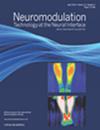Effects of Ultrasound-Guided Percutaneous Neuromodulation on Shoulder Muscle Strength in CrossFit Athletes: A Pilot Randomized Controlled Trial
IF 3.5
3区 医学
Q2 CLINICAL NEUROLOGY
引用次数: 0
Abstract
Background
CrossFit integrates diverse functional movements to optimize overall fitness, with muscle strength training being a core component. Ultrasound-guided percutaneous neuromodulation (US-guided PNM) has emerged as a potential adjunct to enhance muscle strength gains; however, its efficacy in the upper limb in healthy individuals remains unexplored.
Objective
This study evaluated the efficacy of two US-guided PNM protocols (three sessions and one session) targeting the axillary and suprascapular nerves in improving shoulder muscle strength in healthy CrossFit athletes.
Materials and Methods
A pilot, randomized, controlled, single-blind clinical trial was conducted with 39 healthy CrossFit athletes randomly allocated to one of three groups: control (G1, no intervention), one session of US-guided PNM (G2), or three sessions of US-guided PNM (G3). Shoulder muscle strength was assessed using a hand-held dynamometer to measure external and internal rotation muscle strength at various shoulder positions before each treatment session (days 1, 7, and 14) and one week after the last session (day 21). Moreover, the one-repetition maximum (1RM) shoulder press exercise was evaluated on day 1 and day 21.
Results
No statistically significant differences were observed among groups for any outcome. However, the within-group analysis indicated statistically significant improvements over time in the treated limbs of intervention groups (G2 and G3), whereas no statistically significant changes were observed in the control (G1) or the untreated limbs of G2 and G3. The improvements were more consistent for shoulder strength measured in the neutral position than at 90° abduction.
Conclusions
Although US-guided PNM did not yield significantly greater improvements than did the control group, both one and three sessions targeting the axillary and suprascapular nerves enhanced rotational shoulder muscle strength in treated limbs and 1RM shoulder press performance. These findings should be interpreted with caution, and further investigation is warranted, particularly in populations with lower baseline strength and in exploring varied application parameters to optimize efficacy.
Clinical Trial Registration
The Clinicaltrials.gov registration number for the study is NCT06529770.
超声引导下经皮神经调节对综合健身运动员肩部肌肉力量的影响:一项随机对照试验。
背景:CrossFit融合了多种功能动作,以优化整体健身,肌肉力量训练是核心组成部分。超声引导的经皮神经调节(US-guided PNM)已成为增强肌肉力量增益的潜在辅助手段;然而,其在健康个体上肢的功效仍未被探索。目的:本研究评估了针对腋窝和肩胛上神经的两种US-guided PNM方案(3次和1次)对健康CrossFit运动员肩部肌肉力量的改善效果。材料与方法:对39名健康CrossFit运动员进行了一项先导、随机、对照、单盲临床试验,将其随机分为三组:对照组(G1,不干预)、一组US-guided PNM (G2)和三组US-guided PNM (G3)。在每次治疗前(第1、7和14天)和最后一次治疗后一周(第21天),使用手持式测力仪测量不同肩部位置的外旋和内旋肌肉力量,评估肩部肌肉力量。此外,在第1天和第21天评估一次最大重复(1RM)肩压练习。结果:各组间各项结果均无统计学差异。然而,组内分析显示,随着时间的推移,干预组(G2和G3)的治疗肢体有统计学意义的改善,而对照组(G1)或未治疗的G2和G3的肢体没有统计学意义的变化。与90°外展相比,中立位测得的肩部力量改善更为一致。结论:虽然us引导下的PNM没有比对照组产生更大的改善,但针对腋窝和肩胛上神经的1次和3次治疗均增强了治疗肢体的旋转肩部肌肉力量和1RM肩部按压性能。这些发现应谨慎解释,并有必要进行进一步的调查,特别是在基线强度较低的人群中,并探索不同的应用参数以优化疗效。临床试验注册:该研究的Clinicaltrials.gov注册号为NCT06529770。
本文章由计算机程序翻译,如有差异,请以英文原文为准。
求助全文
约1分钟内获得全文
求助全文
来源期刊

Neuromodulation
医学-临床神经学
CiteScore
6.40
自引率
3.60%
发文量
978
审稿时长
54 days
期刊介绍:
Neuromodulation: Technology at the Neural Interface is the preeminent journal in the area of neuromodulation, providing our readership with the state of the art clinical, translational, and basic science research in the field. For clinicians, engineers, scientists and members of the biotechnology industry alike, Neuromodulation provides timely and rigorously peer-reviewed articles on the technology, science, and clinical application of devices that interface with the nervous system to treat disease and improve function.
 求助内容:
求助内容: 应助结果提醒方式:
应助结果提醒方式:


